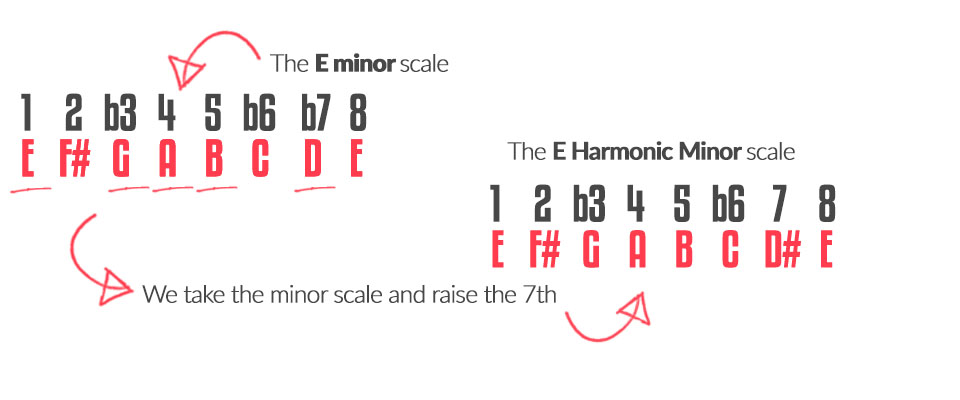Guitar songs don't come any bigger than this! The intro riff, the chord progression, the lead breaks and the epic solo at the end... This song is a beautiful guitar indulgence that has gone down as one of the greatest songs of all time. We'll learn it all here, in the safe hands of YGA's Ollie!
The scales: Harmonic Minor scale
This is that lick in the track where the wah-wah pedal comes on! You know the one... The crazy fast one! Well, the whole thing uses the E harmonic minor scale in a couple of positions on the fretboard. This is then combined with your classic E minor pentatonic shape 1 to complete the lick! If you are unsure of the shapes Ollie is using, check it out below:
Theory: The harmonic Minor
So, what is the harmonic minor scale? The harmonic scale is a widely used alternative to the natural minor scale. It is widely used because it sounds far darker than the natural minor, which is essentially just a mode of the major scale. Also, when you harmonise this scale to create a set of chords, they sound far more minor and create a clearer difference in sound between the major and minor keys. These are all topics we can explore, but for now, let's just get the theory correct. Here is how to construct a harmonic minor scale:

The scales: Following the chords
This intro riff very much follows the chords underneath, and therefore it is important to first look at the chords we are playing. NOTE: The guitar is tuned to Eb (every string one semitone down) in the record, but we are playing in standard tuning. Here are the chords underneath the riff:
So, we are considering these chords when we play the riff, but fundamentally the overall key is G major, so all of the notes fit perfectly into that scale shape, it is just the first note of each section that changes to match the chord a little more neatly. Here are the two scale shapes you should be aware of as you play through it!
The technique: Alternate vs Economy picking
When you play through this riff it is important to get the right-hand technique correct and to suit your style of playing. Some players will use a technique called 'alternate picking', others will use 'economy picking'. So, what do they mean? Well, here's a quick guide! As for which one you should do? Well, try and both and see what feels more natural. Then go with that!
ECONOMY PICKING:
Economy picking is where you make the smallest movement with your plectrum as possible. A typical example is, when changing string after hitting a note on the previous string, you do the same stroke. So if you went from the E string to the A string you would do two downstrokes, rather than a down-up motion that you would do with alternate picking.ALTERNATE PICKING:
Alternate picking is the strict motion of down and up with your plectrum, and never breaking that. It's something that you should always learn as beginners, but then as you progress into a more advanced stage, you may decide to switch to economy picking for faster guitar runs... But you don't have to! You can still play very fast with alternate picking.The verse & chorus: Chords shapes & rhythm
To start with, let's take a look at the verse and chorus chords, with the rhythm. We are using open chord major shapes followed by powerchords for the chorus. The chord shapes are as shown here:
As for the rhythm, we simply use two strums per bar, which looks as shown below. Remember to keep your right arm swinging even when you are not hitting the strings... That is your metronome!
The Second Section: Barre Chords & Heavy Rock!
For the second section of the song, where we move into the key of E minor, we have two distinct sections. Firstly the barre chords, followed by the powerchords. All the chord shapes you need are shown here below:
Solo 1 & 2: The scales
For these two solos we are using the G major scale and G major pentatonic scale, mainly around position 1, but also a little in 2. For your reference, we have put those scale shapes below. Make sure you can visualise them when playing through the song.
Solo 3: The scales
For this solo we are very much in the key of E minor, and we are using the E minor scale, the E minor pentatonic scale and the E harmonic minor scale in a few positions on the neck. As it is so important to know these scales, we have drawn out the scales across the fretboard for you to match up with the solo. This will really help you be able to take the licks and improvise with them in different keys.